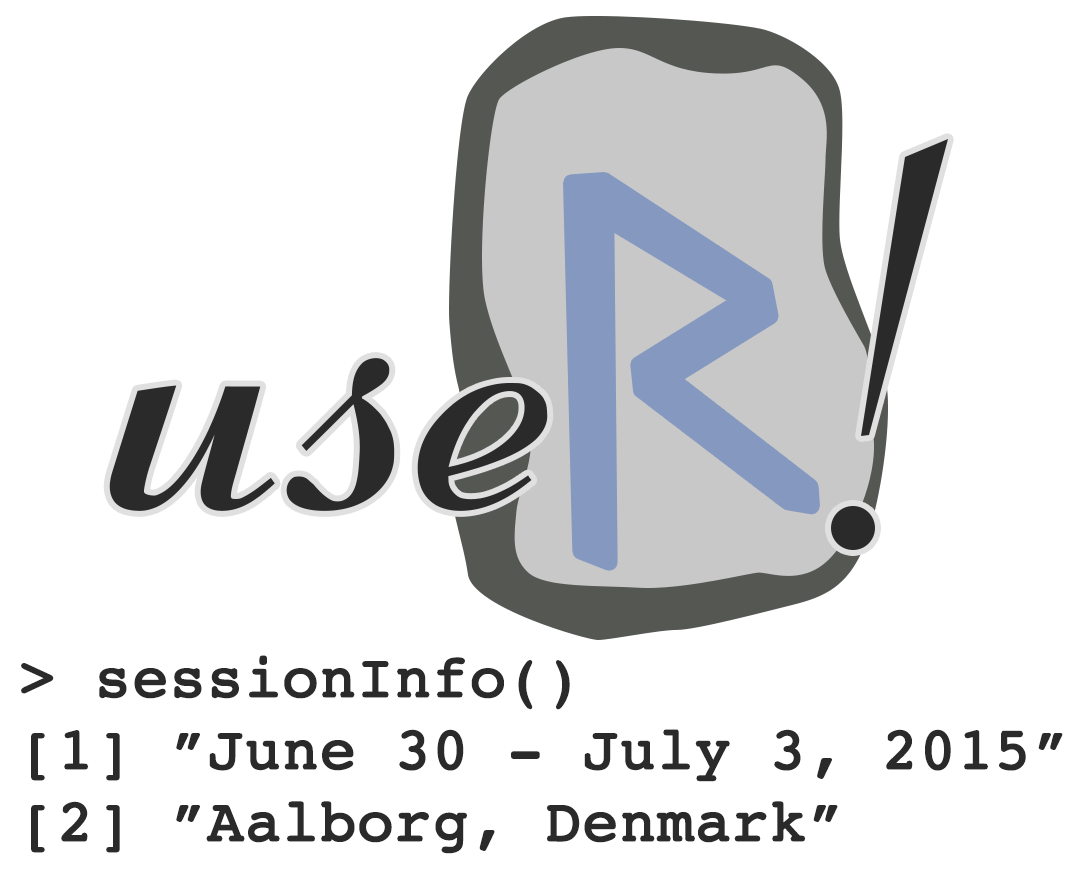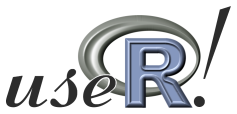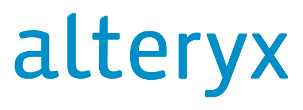Tutorials
The following 16 tutorials will be offered free of charge to the useR! 2015 participants on Tutorial Tuesday, June 30. The duration of each tutorial will be 3 hours. There will 8 tutorials in the morning session and 8 in the afternoon session.
The tutorials are given on a first-come first-served basis. Hence, you just show up on Tutorial Tuesday, register and participate. The tutorial rooms should be sufficiently big to seat everybody (see below). During Tutorial Tuesday coffee, fruit, water, soft drinks, cake and sandwiches are served to the participants (included in the registration).
List of tutorials
For elaborate descriptions of the tutorials please click on the tutorial titles.
Morning session
The following 8 tutorials are offered during the morning session (09:00 - 12:00):- Applied Spatial Data Analysis with R (Virgilio Gómez Rubio) - [material @ www] - Room: Bondestuen (36 seats)
- Bayesian Networks and Graphical Models with R (Søren Højsgaard and Therese Graversen) - [material @ www] - Room: Latinerstuen (42 seats)
- Data manipulation with dplyr (Hadley Wickham) - [material as zip] - Room: Det lille Teater (224 seats)
- Efficient statistical consulting using R Workflow for data analysis projects (Peter Baker) - [material @ www] - Room: Musiksalen (102 seats)
- Handling missing values with a special focus on the use of principal components methods (François Husson) - [material @ www] - Room: Harlekinsalen (30 seats)
- RHadoop (Andrie de Vries and Simon Field) - [material @ www] - Room: Radiosalen (144 seats)
- Rocker: Using R on Docker (Dirk Eddelbuettel) - [material as pdf] - Room: Laugsstuen (60 seats)
- Statistical analysis of network data (Gabor Csardi) - [material @ www] - Room: Gæstesalen (90 seats)
Afternoon session
The following 8 tutorials are offered during the afternoon session (13:30 - 16:30):- Analysis and Visualization of Large Complex Data with Tessera (Ryan Hafen and Stephen Elston) - [material @ www] - Room: Gæstesalen (90 seats)
- Applied Machine Learning and Efficient Model Selection with mlr (Bernd Bischl and Michel Lang) - [material @ www] - Room: Musiksalen (102 seats)
- Bioconductor for high-throughput sequence analysis (Martin Morgan) - [material @ www (search useR! 2015): talk, lab, Github] - Room: Latinerstuen (42 seats)
- Getting to Know Grid Graphics (Paul Murrell) - [material @ www] - Room: Laugsstuen (60 seats)
- Introduction to Bayesian Data Analysis with R (Rasmus Bååth) - [material @ www] - Room: Radiosalen (144 seats)
- spatstat: An R package for analysing spatial point patterns (Adrian Baddeley and Ege Rubak) - [material @ www] - Room: Harlekinsalen (30 seats)
- Testing R Code (Richard J. Cotton) - [material as zip] - Room: Det lille Teater (224 seats)
- Using Pandoc's markdown with R (Gergely Daróczi) - [material @ www] - Room: Bondestuen (36 seats)
Morning session tutorials
Applied Spatial Data Analysis with R (Virgilio Gómez Rubio)
Room: Bondestuen (36 seats)
This tutorial is aimed at researchers which have to deal with the analysis of spatial data. The tutorial will tackle the problem of analysing spatial data with the R programming language. Different types of spatial data will be covered, such as point patterns, lattice data and data coming from irregular measurements of continuous processes (geostatistics). In addition, different worked examples will be presented showing how to proceed with the analysis of a wide range of spatial data sets.
The topics of the course will contain an introduction to various R packages for the analysis of spatial data. This includes data import/export, data management and visualisation, and how to fit a broad range of models for spatial data. The worked examples will focus on particular real data sets from Epidemiology, Environmental Sciences, Ecology, Economics and others.
URL: http://www.uclm.es/profesorado/vgomez/useR2015
Full length description: Applied Spatial Data Analysis with R
Bayesian Networks and Graphical Models with R (Søren Højsgaard and Therese Graversen)
Room: Latinerstuen (42 seats)
We introduce Bayesian Networks (BNs) and their implementation in the gRain package. Topics will include probability propagation in BNs and aspects of learning BNs from data.
Examples from genetics will be used throughout for illustrative purposes. Moreover, there will be a running example about building a BN for a medical diagnosis from real-world data.
Attendees are assumed to have a working understanding of log-linear models for contingency tables. Relevant literature includes: Højsgaard, S.; Edwards, D.; Lauritzen, S. (2012): Graphical models with R, Springer
Full length description: Bayesian Networks and Graphical Models with R
Data manipulation with dplyr (Hadley Wickham)
Room: Det lille Teater (224 seats)
Data manipulation is a key part of any data analysis, crucial for interactive exploration and as a precursor for visualisation and modelling. The dplyr package makes it easy to express the most common manipulation operations in natural way, built around verbs like `filter()`, `mutate()`, `group_by()` and `summarise()`. In this tutorial, you'll learn dplyr in an interactive setting, with plenty of hands-on activities.
Full length description: Data manipulation with dplyr
Efficient statistical consulting using R Workflow for data analysis projects (Peter Baker)
Room: Musiksalen (102 seats)
Many researchers and statistical consultants are drowning in data. This tutorial provides a hands-on introduction to strategies for the workflow of research data management and data analysis. While loosely based on the manual approaches of Long (2009) "The Workflow of Data Analysis Using STATA", a more automated strategy will be outlined. One approach is to systematically employ computing tools like 'R', 'git' and 'make' to assist in this process. These tools will be incorporated into the practical exercises.
R is ideal for automating repetitive tasks since, in addition to thousands of built-in functions, it is easy to write your own. Such functions can be used for diverse tasks such as setting up project directories and R syntax files, checking data against code books, repeating custom analyses and extracting results for reproducible reporting to HTML, Word or pdf formats. 'make' keeps track of the dependencies in the process and allows the workflow to be broken down into smaller chunks like reading data, checking, analysing and reporting. Only the updated steps in this workflow are re-run. Finally, git safely allows analysts to try new ideas but revert to previous versions of R scripts or reports without needing multiple versions.
Full length description: Efficient statistical consulting using R Workflow for data analysis projects
Handling missing values with a special focus on the use of principal components methods (François Husson)
Room: Harlekinsalen (30 seats)
Handling missing values is certainly the most thankless task for a practitioner in statistics but unfortunately it is a very common task.
This tutorial describes and compares several methods to handle missing values in data sets with continuous, categorical or mixed variables. Principal component methods as well as random forests or methods based on joint or conditional modelling will be used first to perform single imputation, but also to perform multiple imputation to take into account the variability that exists on each imputed value.
The different methods will be illustrated with numerous examples from different fields such as genomics (human tumor data), sensometrics (wine data) and survey (questionnaire data) and we will use the R packages Amelia, MICE and missMDA.
Full length description: Handling missing values with a special focus on the use of principal components methods
RHadoop (Andrie de Vries and Simon Field)
Room: Radiosalen (144 seats)
Using Hadoop for big data is a much-hyped technology. Originally developed by companies with web-scale data, Hadoop is increasingly being evaluated by IT departments in many other industries. The R data scientist must know how to modify algorithms to use of the Hadoop map-reduce paradigm. Fortunately, R has many features of functional languages, for example lapply() which is a simple example of the philosophy of map-reduce. This makes it comparatively easy for an R user to understand the map-reduce idea. The RHadoop project is an abstraction layer around the Hadoop map-reduce paradigm and HDFS file system, meaning you can focus on writing R code, rather than learning Java. This tutorial introduces RHadoop to data scientists new to Hadoop. We do a gentle introduction of terminology, develop the prototypical word count example, and then illustrate distributed computing concepts such as k-means clustering and linear regression on distributed data. Prior to the event, we will publish a virtual machine containing the Hortonworks Hadoop distribution, complete with R, the RHadoop packages and an RStudio IDE. This makes it easy for students to get set up and practise. We also plan to provision a Microsoft Azure Hadoop cluster to use on the day.
Full length description: RHadoop
Rocker: Using R on Docker (Dirk Eddelbuettel)
Room: Laugsstuen (60 seats)
Docker is emerging as a key technology which provides containers: easily deployable environments which are standardized, easy to share and reuse, highly portable while being light on resource usage. Docker is ideal for building, testing and deploying code---as well as for providing reproducible environments. Docker also provides hub.docker.com, a container hosting and build service interfacing Github.
The Rocker project provides the default R image for Docker as well as a number of containers extending it: use of R-devel, an RStudio instance, a container full of Hadleyverse packages and more.
The tutorial introduces basic interactive Docker use via the popular RStudio Server container, along with an introduction to committing, pushing and pulling containers. A focus on command-line mode examines Docker use in more detail, including how to share files between the host machine and the Docker instance. Finally, writing and modifying Dockerfiles for both local use and Docker Hub uploads will be discussed based on several examples from the more advanced Rocker containers.
More information is available at the Rocker wiki
Full length description: Rocker: Using R on Docker
Statistical analysis of network data (Gabor Csardi)
Room: Gæstesalen (90 seats)
Analysis of networks is a popular area, because of the abundance of network data, and recent methodological developments. We will cover 280 years of networks, from Euler to Graphons, through a number of mathematical, algorithmic and statistical methods.
Topics:- Why networks are interesting and important.
- Manipulating them, conversions between formats.
- Paths, searches, flows, cuts and cohesive groups.
- Centrality, from classic to spectral measures.
- Visualization, with various packages (e.g. DiagrammeR) and external tools. Visualization of large graphs using community detection.
- Finding groups in networks, community detection.
- Random graphs and their use. Classic models, stochastic block models, mixed membership stochastic block models.
- Statistical methods: embeddings, graphlets, graphons.
- Temporal networks and change-point detection.
For most of the tutorial we will use the igraph R package. Example code and data sets will be available to participants.
Target audience: statisticians and data scientists unsure what to do with their network data, or how to do it with R. Anyone wanting to get a quick taste of current network methods and tools.
Background knowledge required: basic R skills, at the level of any decent introductory R textbook. All network concepts will be explained.
Full length description: Statistical analysis of network data
Afternoon session tutorials
Analysis and Visualization of Large Complex Data with Tessera (Ryan Hafen and Stephen Elston)
Room: Gæstesalen (90 seats)
Tessera is an open source statistical computing environment that enables R users to perform deep analysis of large, complex data sets. Analysis can be carried out completely from within the R environment, making use of all of the thousands of methods available in R. Tessera uses the Divide and Recombine (D&R) approach. In D&R, data are divided into meaningful subsets, embarrassingly parallel computations are performed on the subsets, and results are combined in a statistically valid manner. Using the R datadr package, Tessera provides a simple interface to distributed parallel back end computation environments such as Hadoop or Spark. Tessera includes a visualization component, Trelliscope, which provides a D&R approach for detailed, flexible, and interactive visualization of large complex data. More details are available at http://tessera.io/docs-UseR2015/.
In this tutorial, R users will gain hands-on experience analyzing and visualizing data with Tessera. The interactive tutorial examples are small enough to run on an attendee-provided laptop. The techniques learned can be quickly scaled up to a larger cluster for larger data sets. Attendee-provided laptops with a modern web browser installed will be required.
Full length description: Analysis and Visualization of Large Complex Data with Tessera
Applied Machine Learning and Efficient Model Selection with mlr (Bernd Bischl and Michel Lang)
Room: Musiksalen (102 seats)
The course will enable the participants to understand and practically apply the most important building blocks of machine learning experiments with the mlr package in supervised and unsupervised machine learning, i.e. classification, regression, survival analysis and clustering.
The mlr package allows data analysts who are neither experts in machine learning nor seasoned R programmers to specify complex machine learning experiments in short, succinct and scalable code. Experienced programmers, on the other hand, get to wield a large, well-designed toolbox, which they can easily customize and extend to their needs.
The participants will learn how to perform basic mlr operations like data import, data preprocessing, model building, performance evaluation and resampling. Using these basic building blocks, we will focus on more advanced topics like benchmarking, model selection and hyperparameter tuning. We will also demonstrate how to easily parallelize the most time-consuming operations in common parallel environments.
The course will end with a short demonstration on how to access the new OpenML server for open machine learning (http://www.openml.org) which provides a large repository of benchmark data sets and enables reproducible experiments and meta analysis.
Link for further details can be found on the useR2015 wiki page: https://github.com/berndbischl/mlr/wiki/useR-2015-tutorial
Full length description: Applied Machine Learning and Efficient Model Selection with mlr
Bioconductor for high-throughput sequence analysis (Martin Morgan)
Room: Latinerstuen (42 seats)
DNA sequence analysis generates large volumes of data presenting challenging bioinformatic and statistical problems. This tutorial introduces established and new Bioconductor (http://bioconductor.org) packages and work flows for the analysis of sequence data. We learn about approaches for efficiently manipulating sequences and alignments, and introduce common work flows and the unique statistical challenges associated with 'RNAseq', variant annotation, and other experiments. The emphasis is on exploratory analysis, and the analysis of designed experiments. The workshop will touch on the Biostrings, ShortRead, GenomicRanges, DESeq2, VariantAnnotation, and other packages, with short exercises to illustrate the functionality of each package. The goals of the workshop are to: (1) Gain overall familiarity with Bioconductor packages for high-throughput sequence analysis, including Bioconductor vignettes and classes; (2) Obtain experience running bioninformatic work flows for data quality assessment, RNA-seq differential expression, and manipulating variant call format files; (3) Appreciate the importance of ranges and range-based manipulation for modern genomic analysis; and (4) Learn 'best practices' for working with large data. The workshop assumes an intermediate level of familiarity with R, and basic understanding of biological and technological aspects of high-throughput sequence analysis. Participants should come prepared with a modern wireless-enabled laptop and web browser installed. This workshop is for professional bioinformaticians and statisticians intending to use R / Bioconductor for analysis and comprehension of high-throughput sequence data.
Full length description: Bioconductor for high-throughput sequence analysis
Getting to Know Grid Graphics (Paul Murrell)
Room: Laugsstuen (60 seats)
The 'grid' graphics package provides a low-level graphics system for R. Many R users do not have direct contact with 'grid', but they regularly make indirect use of 'grid' whenever they draw a 'lattice' or 'ggplot2' plot.
This tutorial will expose the 'grid' graphics system that is lurking behind higher-level packages, like 'lattice' and 'ggplot2', and explore the tools that 'grid' provides to modify, customise, reuse, and augment those higher-level plots. We will learn about the fundamental concepts in 'grid' graphics---grobs, units, and viewports---and we will learn functions to explore, access, and manipulate grobs and viewports.
Full length description: Getting to Know Grid Graphics
Introduction to Bayesian Data Analysis with R (Rasmus Bååth)
Room: Radiosalen (144 seats)
Bayesian data analysis is a powerful technique for model inference and prediction, and R is the tool that makes this easy. This tutorial is a general introduction to Bayesian data analysis using R. It will cover the basics of Bayesian modeling, both the theory underpinning it and the practicalities of doing it in R. The target audience is useRs with little or no knowledge of Bayesian data analysis. After the tutorial you should be able to run simple Bayesian analyzes in R.
The tutorial is divided into two parts where each part consists of a presentation followed by a hands-on exercise session. Part 1 will introduce Bayesian modeling from a simulation based perspective and describe the what? why? and how? of Bayesian data analysis. Part 2 will focus on R packages that facilitates specifying and fitting Bayesian models. The tutorial is very much introductory in that no prior knowledge of Bayesian data analysis, or even likelihood based statistics, is assumed. For the hands-on exercises it will be necessary for you to know your way around R and to be comfortable manipulating vectors and data frames.
Full length description: Introduction to Bayesian Data Analysis with R
spatstat: An R package for analysing spatial point patterns (Adrian Baddeley and Ege Rubak)
Room: Harlekinsalen (30 seats)
This tutorial will enable participants to analyse spatial point pattern data using the contributed package spatstat. We introduce basic principles, provide an overview of the package, and go through the steps of a complete statistical analysis of point pattern data. Steps include: calculating and plotting exploratory summaries; fitting Poisson, Cox, and Gibbs point process models; validating and critiquing fitted models. Basic familiarity with R and elementary statistical concepts is required, but no prior knowledge of spatial point pattern analysis is assumed, so the tutorial is well suited for newcomers to the field of spatial statistics. The package has grown a lot over the last few years, so current spatstat users wanting a brush-up are also encouraged to participate.
Full length description: spatstat: An R package for analysing spatial point patterns
Testing R Code (Richard J. Cotton)
Room: Det lille Teater (224 seats)
The tutorial aims to educate participants in three things:- How to write R code that is easy to test and maintain.
- How to perform run-time testing using the assertive package.
- How to perform development-time testing using the testthat package.
- understanding software development principles like "Don't Repeat Yourself" and "Fail Early, Fail Often".
- writing good warnings and error messages
- what an assertion is, and how and where to write one
- as above, but for unit tests
- packaging tests
Basic R skills are needed: you need experience in writing your own functions. The unit testing section is mostly applicable to package developers, but no experience in this is assumed. There will be lots of practical examples.
Full length description: Testing R Code
Using Pandoc's markdown with R (Gergely Daróczi)
Room: Bondestuen (36 seats)
Markdown is getting more and more popular among R users, especially in literate programming and report generation. This tutorial will start with a quick introduction on formatting text with markdown syntax outside of R, then I will concentrate on how to create textual reports with e.g. kintr, Sweave or brew. After these warm-up exercises, we can start producing complex markdown documents inside of R, then transform those to various file formats, such as PDF, HTML, odt or docx. No previous knitr or markdown knowledge is required to attend.
Full length description: Using Pandoc's markdown with R

























